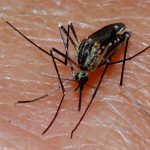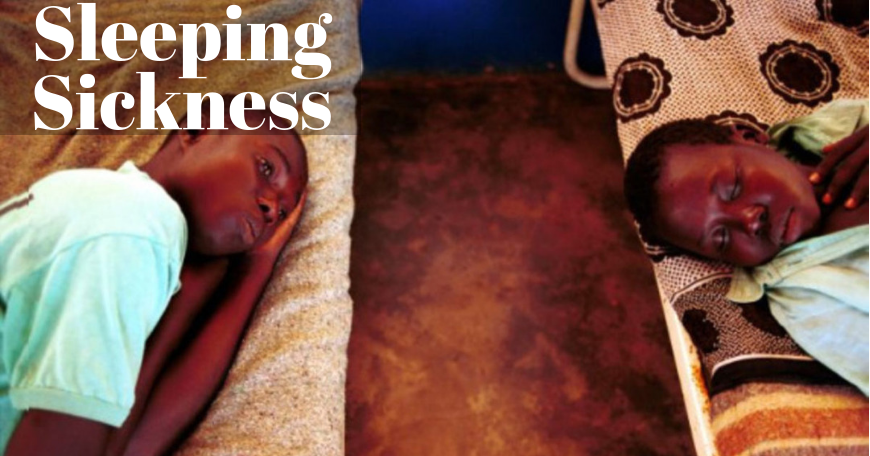Sleeping Sickness – Causes, Prevention and Treatment
1,021 viewsSleeping sickness, also known as trypanosomiasis, is a disease spread by a vector-borne parasite. Protozoan parasites that belong to the genus Trypanosoma, transmitted to humans by the tsetse fly bites that in turn acquire the infection from other infected human beings or animals.

The tsetse fly, the primary carrier of the disease belongs to the Glossina genus and is largely found in sub-Saharan Africa. Only a few species of the fly transmit the disease.
The people most exposed to this disease are the local and rural populations. People that depend on agriculture, fishing, animal husbandry or hunting are the most vulnerable to this disease simply because of their prolonged exposure to the tsetse fly.
The radius of the disease can encompass anything from a single village to an entire region, but here, once again the intensity of the infection may vary.
Understanding Sleeping Sickness
There is a great deal of mystery surrounding the disease. That, however, has no bearing on the serious number of individuals that are affected by it every year. There are a number of regions where tsetse flies are found but the disease is not. There are both, the human and animal form of trypanosomiasis.
The human form of the disease is found in 24 countries across west and central Africa and has 2 forms. Also known as trypansoma brucei gambiense accounts for over 97% of the cases of sleeping sickness.
This form of the disease causes a chronic infection that can lay dormant without exhibiting any symptoms for a long time. When the patient finally exhibits the symptoms he or she is already in the advanced stages of the disease. During the advanced stage of the disease, it is the central nervous system that is affected.
Trypanosoma brucei rhodesiense, on the other hand is found to be prevalent in 13 countries in eastern and southern Africa.
This type of the disease comprises less than 3% of the cases reported. The first symptoms of this variation of the disease are shown within the first weeks of the infection itself. The disease develops rapidly and begins its assault on the central nervous system.
While there is also an animal variant of sleeping sickness, commonly known as Nagana, animals also act as reservoirs of the human pathogen. The precise role of the animal reservoir, however, is not clearly known.
There have been a few severe outbreaks of this disease. The most recent one started in 1970 and lasted till the late 1990s.
This just goes to indicate the sheer pervasiveness and resilience of this disease. Off late, however, the occurrence of this disease has reduced greatly. Caution, however, remains of paramount importance simply because of the sheer insidiousness of this disease. An estimated 65 million are at risk to the disease even today.
Symptoms and Diagnosis
While the conventional form of transmission for this disease is through the bite of an infected tsetse fly, there are other ways that the disease can be transmitted.
The pathogen can find its way through the placenta of an infected mother to infect the foetus.
Contaminated needles can also transfer the disease. There has also been documentation of the disease being transmitted through sexual contact.
During the first stage of the disease the trypanosome multiply in the subcutaneous tissue, lymph and blood of the patient. This causes bouts of fever, headaches, itching and even joint pain.
The second stage consists of the parasite breaching the blood-brain barrier and infecting the central nervous system. This is known as the neurological stage of the disease.
It is at this stage that the symptoms and effects of this disease begin manifesting themselves in the patient. This can present the following symptoms:
- Behavioural changes
- Confusion
- Sensory disturbances
- Poor coordination
- A disturbed sleep cycle (the symptom that gives this disease its name)
It is important to note that without treatment the disease can be markedly fatal. It is to be noted that there have been reported cases of carriers who had not manifested the symptoms.
It is important to diagnose the disease as early as possible in order to avoid its progression to the neurological stage.
Once it reaches the neurological stage it requires complicated procedures for treatment. An exhaustive screening for the disease requires a serious investment of manpower and resources. These resources are often considerably fewer in rural areas of Africa, leading to a proliferation of the disease.
Treatment
While the drugs used for the treatment of this disease during its initial stages are considerably safer and easier to procure the same cannot be said for the second stage.
The chances of a complete cure increase with early diagnosis. The patient needs to have follow up tests every 24 months to ensure that there is no resurgence of the infection in their body.
This test includes a complete lab examination of bodily fluids. Even the cerebrospinal fluid is tested through a lumbar puncture. This is done because the parasites remain dormant but viable for long periods and can cause a reflux of the disease at any point of time.
There are a number of drugs that have been prescribed by WHO for treating this disease. These are:
Pentamidine | Suramin | Melarsoprol | Eflornithine | Nifurtimox
Some of these are medicines discovered a long time ago and often used in treatment of diseases as severe as tuberculosis.
It has been found that travellers going to tsetse infected areas are not as easily affected by the disease as the locals. This is simply because of the prolonged exposure of the locals to the infected flies. Tourists, however, are advised that wearing loose clothing that completely covers your body would keep away a majority of the tsetse flies.
At Regency Medical Centre we provide our patients with a thorough screening of the disease to help identify if they are carrying the pathogen. Moreover, our specialists and diagnosticians help ensure that you are getting the best treatment possible to fight the disease if infected. The best way to fight sleeping sickness is being wide awake to the possibility of contracting it.

